MEDiA: La Planète Sauvage, 1973
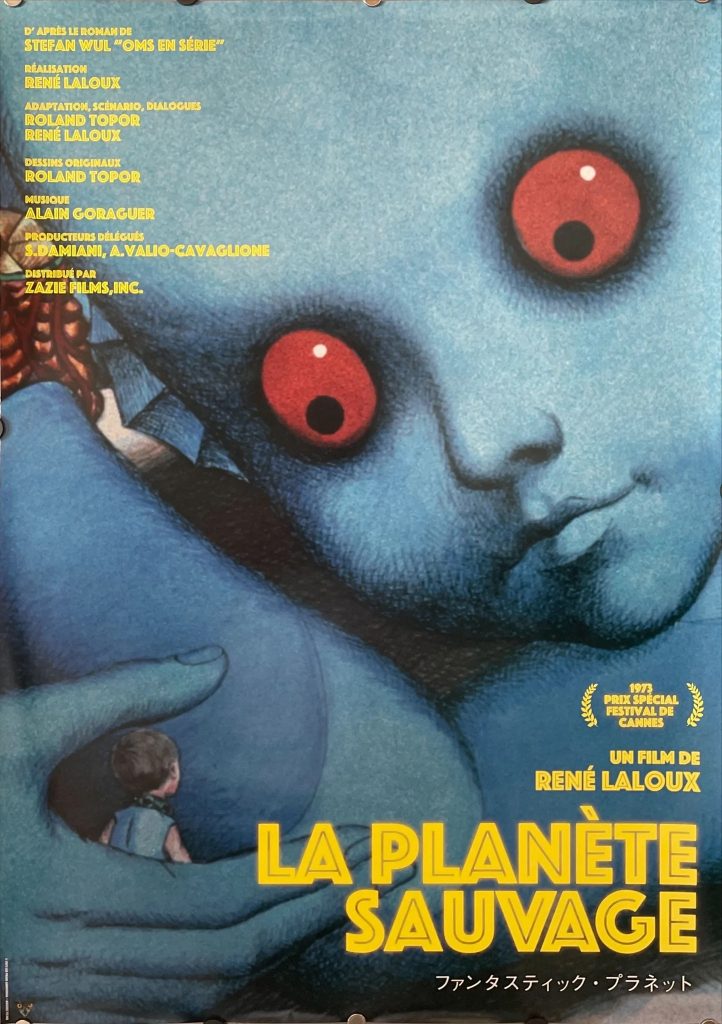

Wow! This is a pretty amazing animated film. The quality of animation is terrific. Especially for its (pre CGI) era. Whilst the visual aesthetic is not immediately to my own tastes, it’s so singular and powerful it kind of sucks one in. Well, me at least, at any rate.
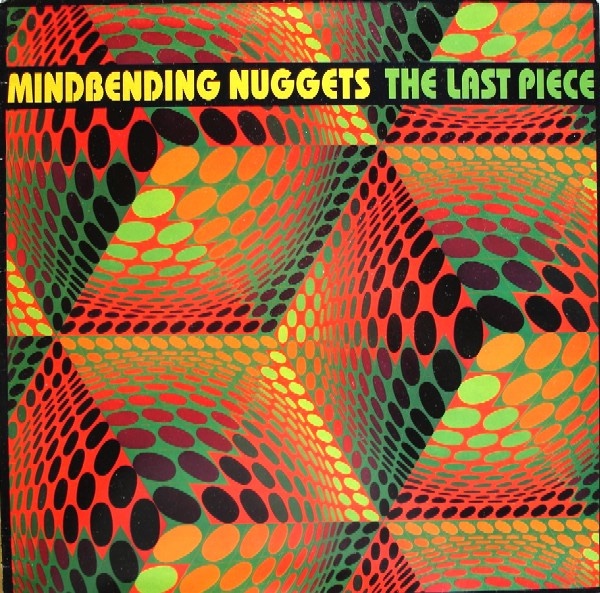
I discovered the existence of this movie thanks to the inclusion of some music from it on the vinyl compilation Mindbending Nuggets, which a friend had bought. This latter is a great collection of slightly obscure music, with a good selection of odd and unusual but groovily funky tracks (released in ‘97).
The basic premise of the film (itself based on a book*) is that humans, called Oms, are kept as pets by Draags, big blue red-eyed and web-eared humanoid characters. These Draags spend most their time meditating and being a bit weird.
They live on a planet, Ygam, whose look reminds one of both surrealism generally, and in particular the paintings of scientist (and surrealist painter) Desmond Morris. All organic blobbiness, but with an appropriately ‘sauvage’ spikiness.
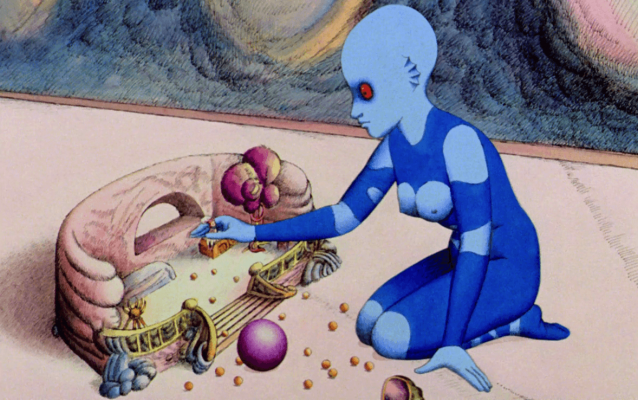
Apparently the movie was marketed as a stoner experience, best watched in an altered state. And I can see that that might well be a good way to see it. Although personally those days are, for the most part, very much behind me now.
The music, by Alain Goraguer is terrific. It’s often compared to Atom Heart Mother era Floyd. Although, to my mind/ears, it’s far more complex, focussed and funky than the Brit-proggers.
Funky keys, wah-guitar, and lush strings and vocals create the perfect aural companion to the visuals. It’s one of those rare instances where the music stands in its own right, and is as strong as the film it accompanies.
Above, a bit more of Goraguer’s work. I’ll prob do a post on him at some point. But for this one, let’s get back to the animated film. Which is, frankly, visually stunning.
* Based on this book:
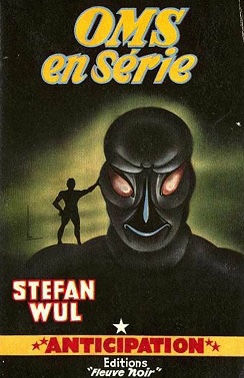
All told, there’s something a bit odd, and slightly limp or disappointing, in the ideas or the narrative. The visual imagination and invention is terrific, but the conceptual side occasionally feels a little lame.
There’s a definite hangover of both WWII and the hippy era. The ‘de-Om’ing’, or culling of humans, clearly resembles the Nazi ‘final solution’. Most obviously so when gas releasing pellets – Zyklon B springs to mind – are used to kill Oms en masse. But in the end, and rather quickly, it’s determined that peaceful co-existence is the only way forward. And, rather abruptly (and dissatisfyingly), boom, the film ends.
It almost feels like they just ran out of either budget or ideas! Maybe not? Who knows. Either way, it’s a bit of a damp squib way to end.
Nevertheless, the sheer visual richness, and the soundtrack, make this essential viewing, in my opinion.
MEDiA: The Titfield Thunderbolt, 1953
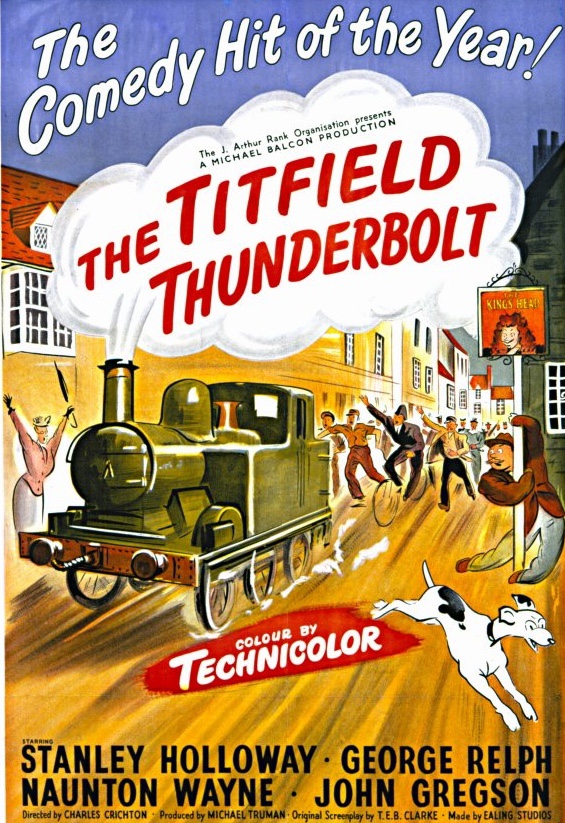

What a strange film! Strange, that is, by modern standards, rather than those of the day. Filmed in ‘glorious Technicolor’ – it was the first Ealing comedy filmed in the new format – it’s a picture postcard fantasy of a certain time in and idea of England.
In essence it’s a comedy about the beginnings of ‘heritage’ railways; as The State withdrew from steam locomotion, the public stepped in. Apparently it’s even based on a real Welsh example, which was allegedly the very first such heritage line. It’s noteworthy that this is a whole decade before the infamous Beeching axe would fall.
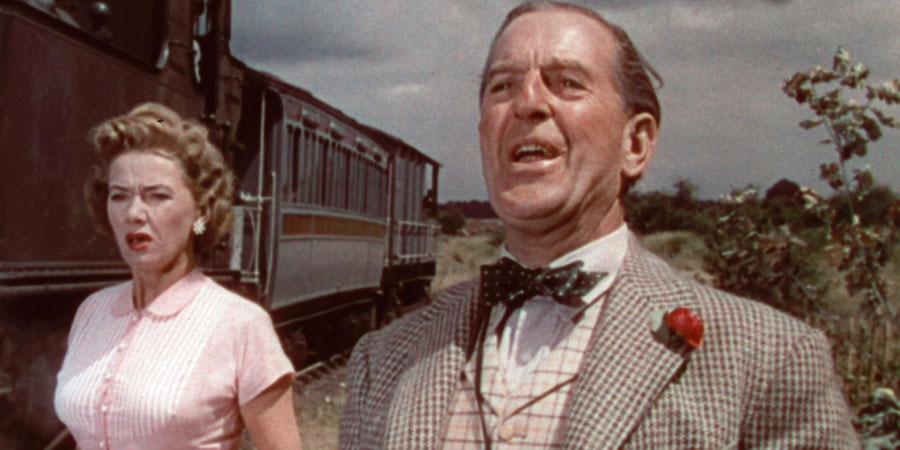
Visually it’s beautiful, a celluloid time-capsule. And it’s also quite sweet in how it portrays the era. There’s a just-post-WWII ‘Blitz spirit’, as when the passengers of the train all pitch in to get water, after the dastardly bus crew get Harry Hawkins (Sid James) to sabotage the water supply.
There are some thumping great ironies in there, as well; witness, for example, when there’s a joke about how, if the railway makes too much profit, it’ll be nationalised!
Modern history has demonstrated, over and over again, particularly under Toryism, that losses are usually nationalised (i.e. passed on to the public purse), whilst profit is privatised.
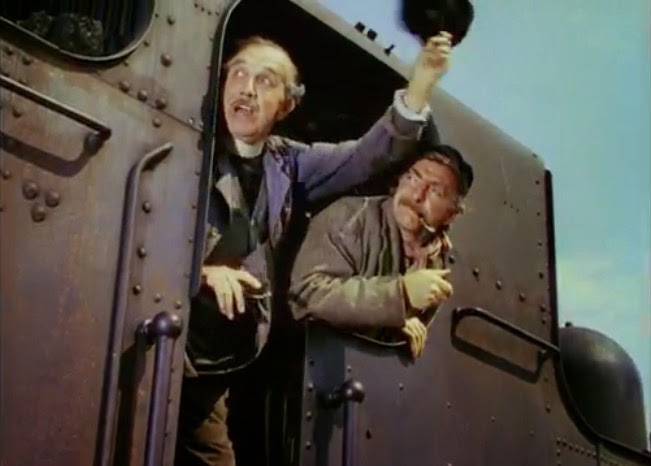
There are also all sorts of moments – for example at the public meeting, when Squire Chesterford (John Gregson) makes the case for the railway (as opposed to bus/road developments), on the basis of how it’ll change the nature of Titfield – that reflect what was considered, at the time, to make for a ‘good old fashioned’ British Utopia.
In this instance that revolves around the fear, also present in George Orwell’s very different 1984 (‘I am a name, not a number’!) that old country lanes will be tarmac’ed, and houses be numbered, rather than named.
Of course the quaint old trains were themselves, at one time, the harbingers of a modern industrialised doom. But now they are – and evidently even back in ‘53 they were – the stuff of ‘olde England’! There are many other little interesting insights into certain visions of how life was then (the squire and the poacher!), what constituted progress, and what makes for the ideal life.
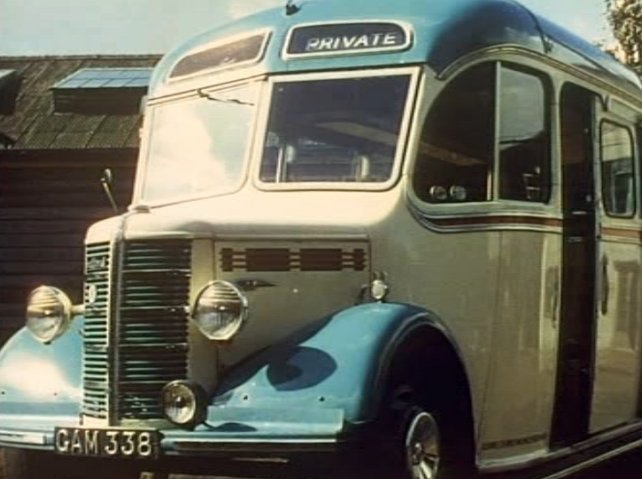
One of the things I like most about this film is the saturated slightly gaudy colour, AKA Technicolor. It’s very like the intense colouring of some design and illustration of that era. And so many things, from the clothes, to furniture, cars, trucks, etc, are, or rather were, so much more aesthetically pleasing than the vast bulk of modern mass-produced tat we are surrounded by now.
For example, the old Bedford bus, of the villainous rivals of the loco’ lovers, Pearce & Crump, is gorgeous. I absolutely adore the upholstery fabric inside the bus:
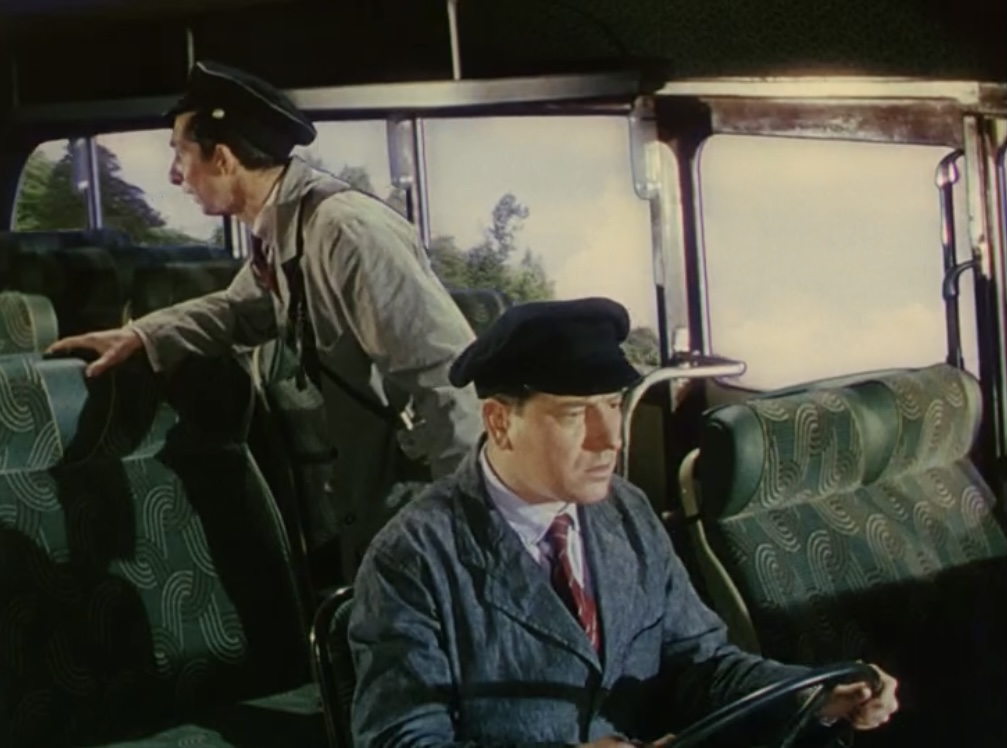
It has to be admitted I was only half watching this delightful old film, whilst Teresa and I played our Sunday afternoon Scrabble game, in between World Cup match viewing. I, or we, really ought to watch it again and give it my/our full attention.
It seems to me a good solid old-fashioned dose of ‘50s period fun. Balcon-era Ealing film at its cosily British best. I’d definitely recommend it.
MUSiC/ART & DESiGN: The Blue Note Art Blakey Covers
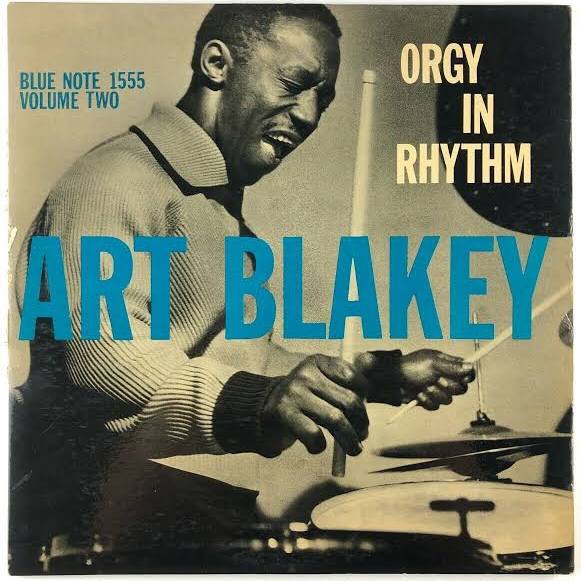
I have a few ‘coffee table’ art books on the subject of jazz record covers. And whilst all of them contain great stuff, none of them quite capture or distil the real magic of the best album covers as I wish they would.
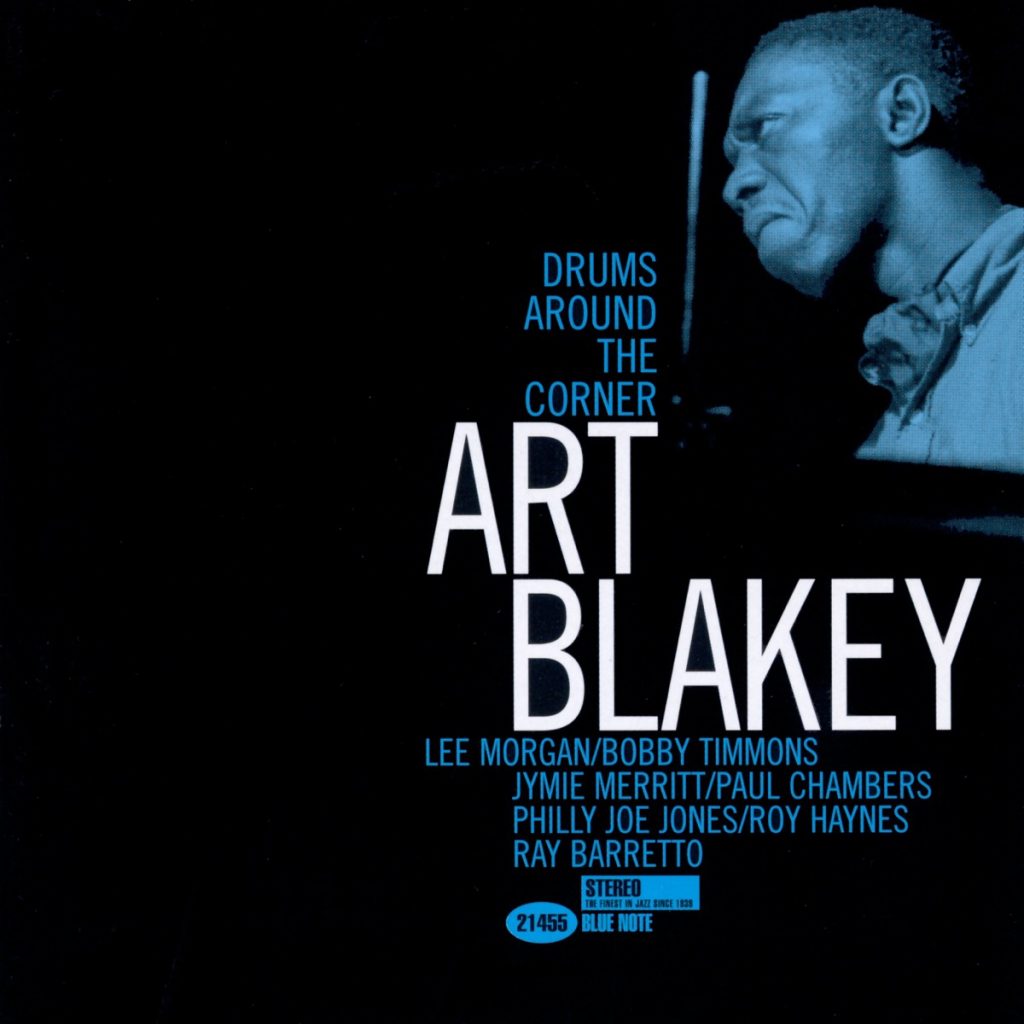
I think to do that they’d have to be bigger than LP-sized, and reproduce all the covers at full size. Ideally with room to spare. There’s naught worse than beautiful images that run into the gutter/spine of a book! Well, I admit, there’s a lot that’s worse. But you know what I’m saying.
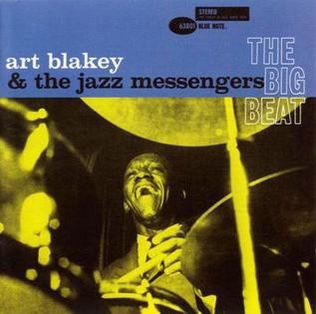
This post isn’t meant to be in any way comprehensive. For starters I’m limiting it purely to one record label and one artist: Art Blakey on Blue Note. But isn’t it amazing how great these covers are? For my money they elevate the packaging to a plane very much akin to the music.
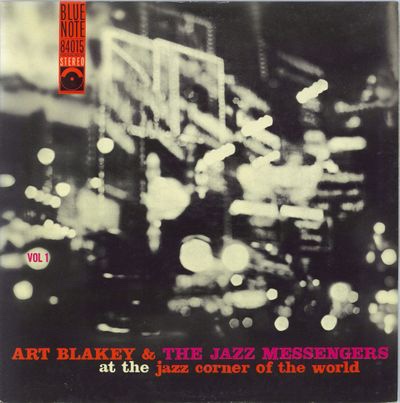
And when both music and art are sublime, that kind of sympathetic synergy is a wonderful thing, to be savoured, treasured, and just plain enjoyed/appreciated… so feast your eyes. And, ideally, put on some Blakey, and feast your ears as well!
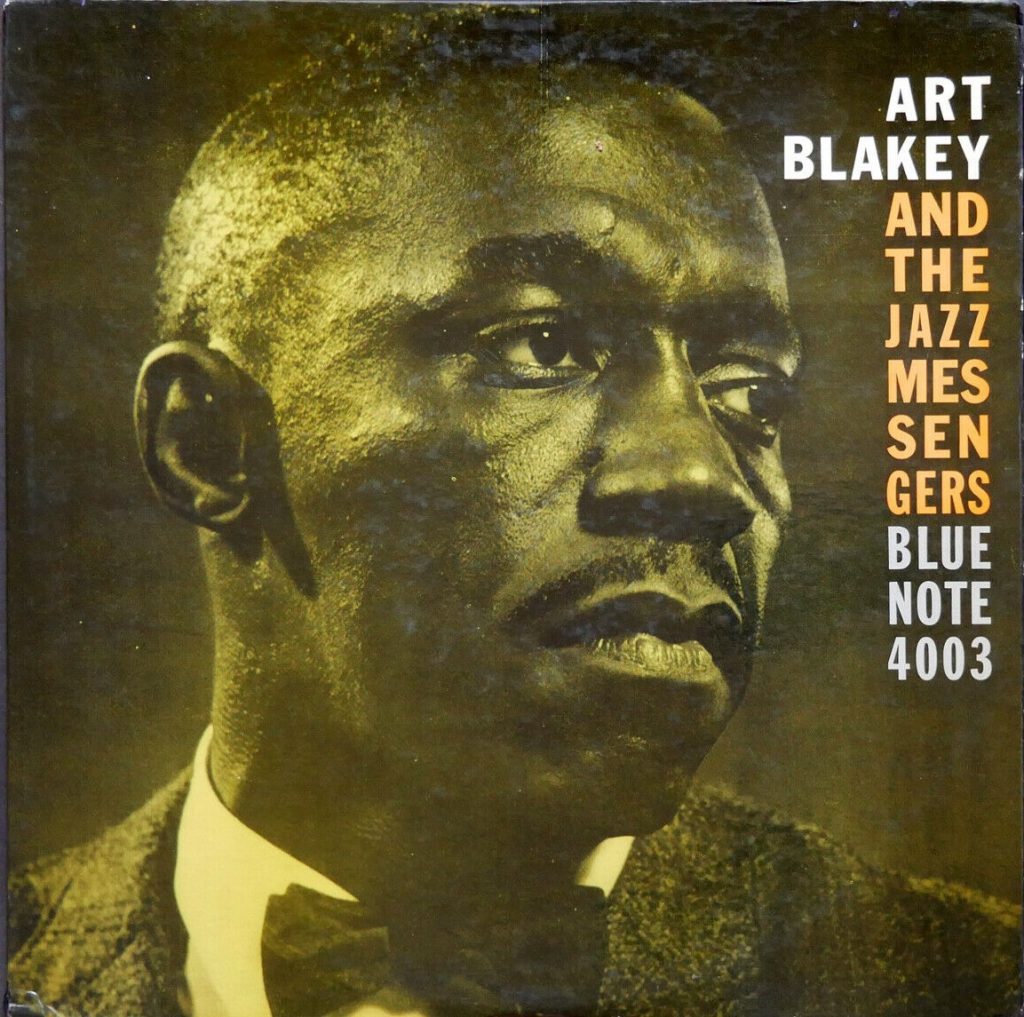
In Art Blakey Reid Miles and Francis Wolff found someone who had the musical spirit they loved, plus seemingly unbounded energy and charisma, and really striking looks to boot. He’s a funny looking dude, in some ways. But he’s incredibly photogenic with it.
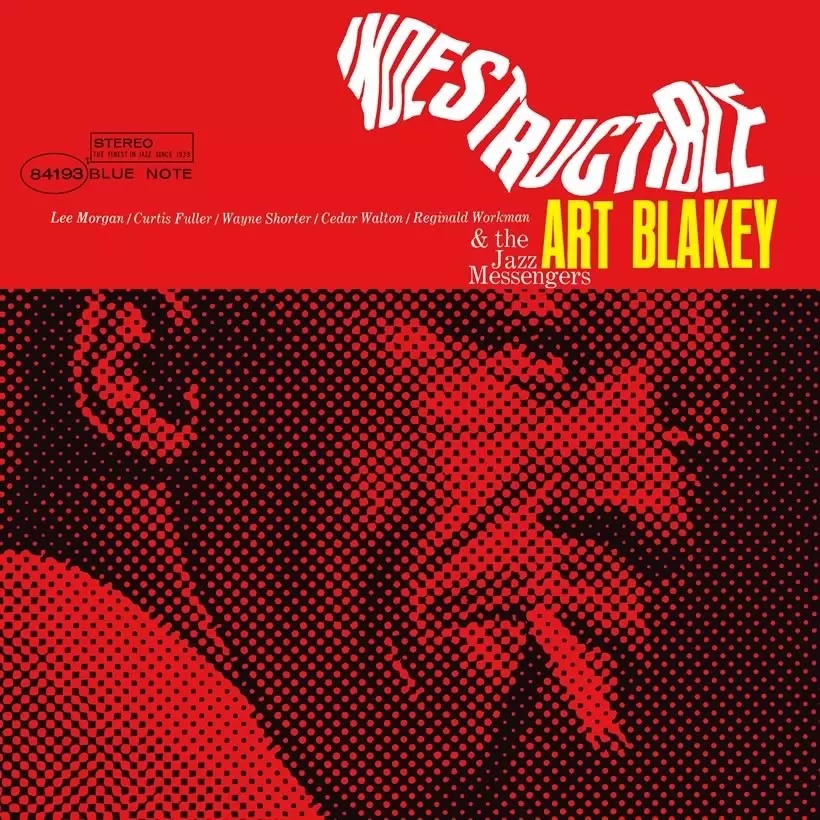
Wolff would be busy, snapping away at recording sessions. And then later Miles would work his hyper-aesthetic design magic. The resulting package is on a par with the music, as art in its own right. And it helps lend the era/genre a hard to define but instantly recognisable vibe, both rootsy and yet sophisticated.
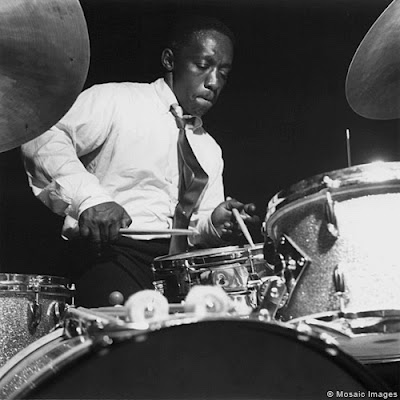
Above is the kind of raw material Wolff would provide Reid Miles with, a fantastic studio shot of the artist at work. Interestingly Wolf’s photographic estate is handled (at least in part?), by the specialist jazz label Mosaic, who might very well have taken their name – they certainly share it – from a Blakey track.
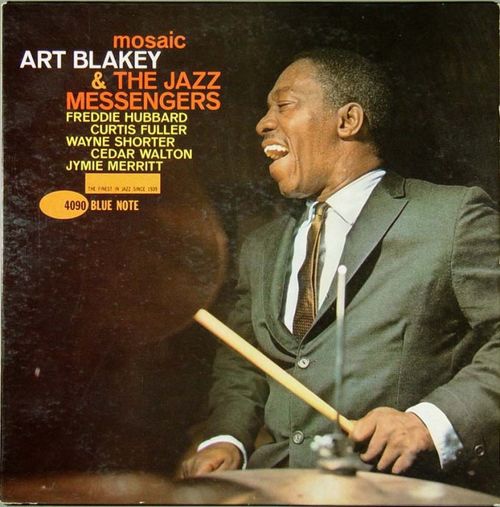
A lot of the covers use black and white photos with single colours as screening tints. And the use of typography is just phenomenal. But as the images directly above and below demonstrate. Miles could still weave his spells with full colour imagery, and more colourful font palettes.
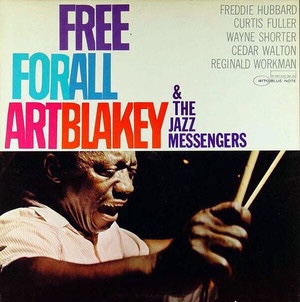
Whether using a fuller range of colours, or going super stark and minimalist, as on Three Blind Mice (below), these covers have a tremendous power. I absolutely adore them!
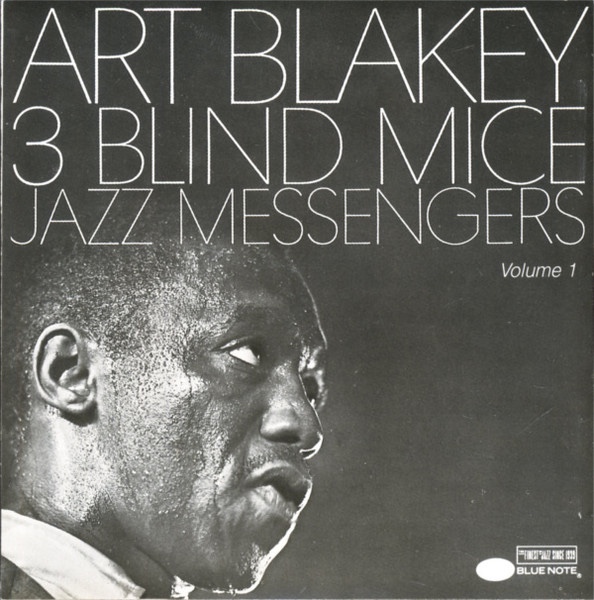
Pictured below is one of the books mentioned at the top of this post.
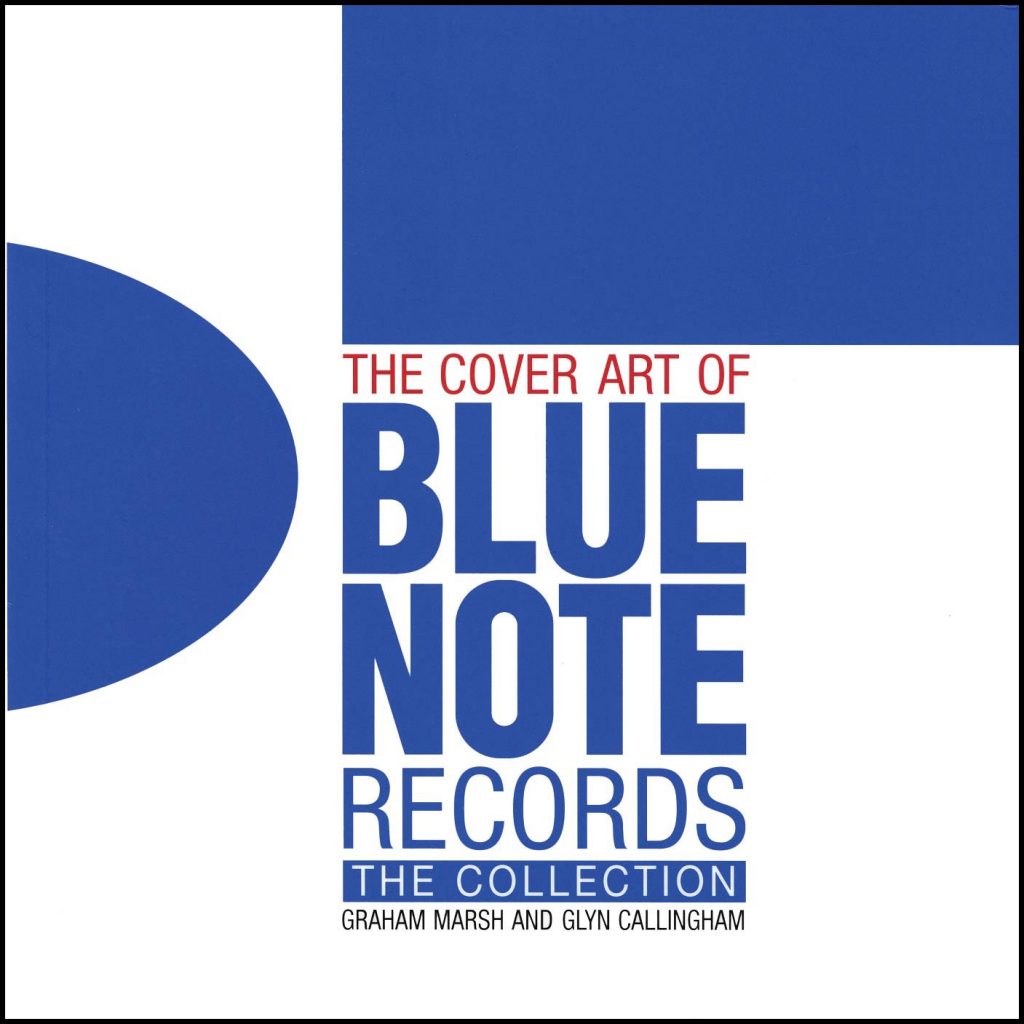
Also worth noting is how the Wolff/Miles house style lives on. The following images are all later non Wolff/Miles productions that clearly owe a debt to and seek to emulate (with varying degrees of fidelity/success) the classic Blue Note house style.
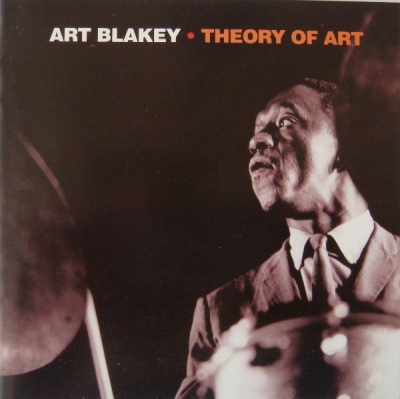
The above is, by normal standards, a great cover. But frankly it’s not in the same league as the real deal. The effort below is a lot better.
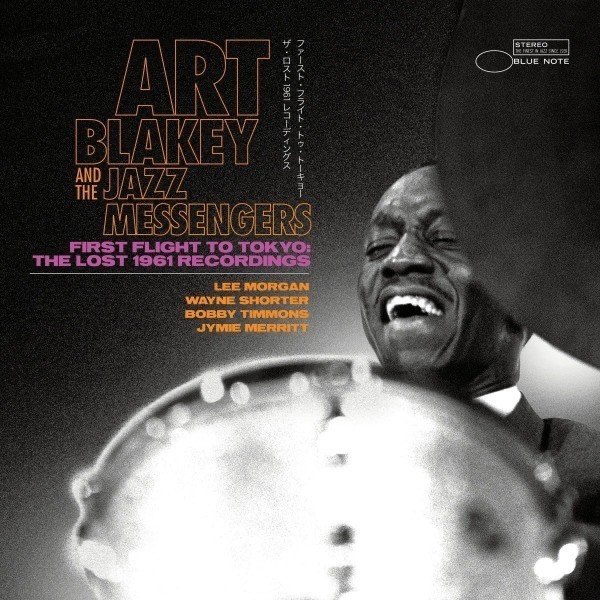
I intend to get a body of these and similar record covers decently printed, and then frame and display them myself, both in my office/home studio, and around our home. To finish, a very early example, from back when Blue Note issued 10” discs. And this last one finds Blakey sharing the billing with another Blue Note legend, Horace Silver.
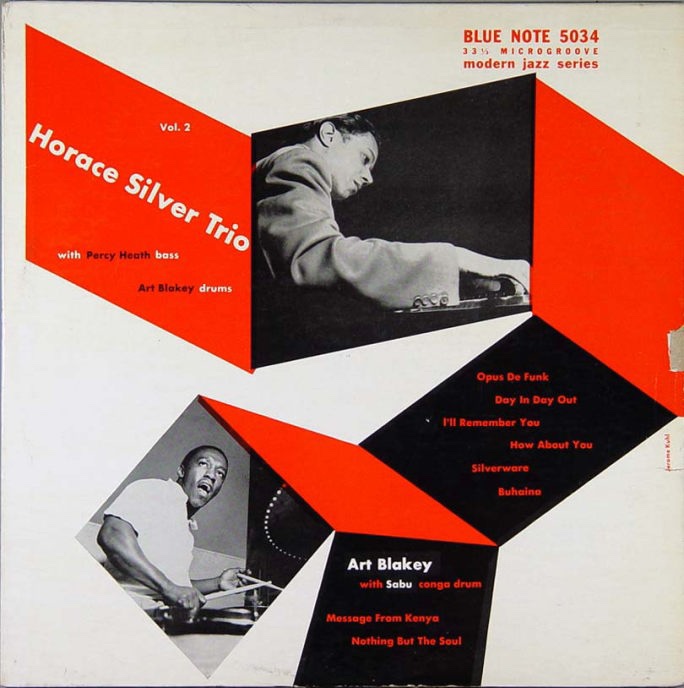
* I’ll prob do another separate post on the sub-category of Blue Note album covers that favour semi-abstract photos, often either out of focus, or treating imagery in almost purely textural terms.
MiSC: Joe Hill
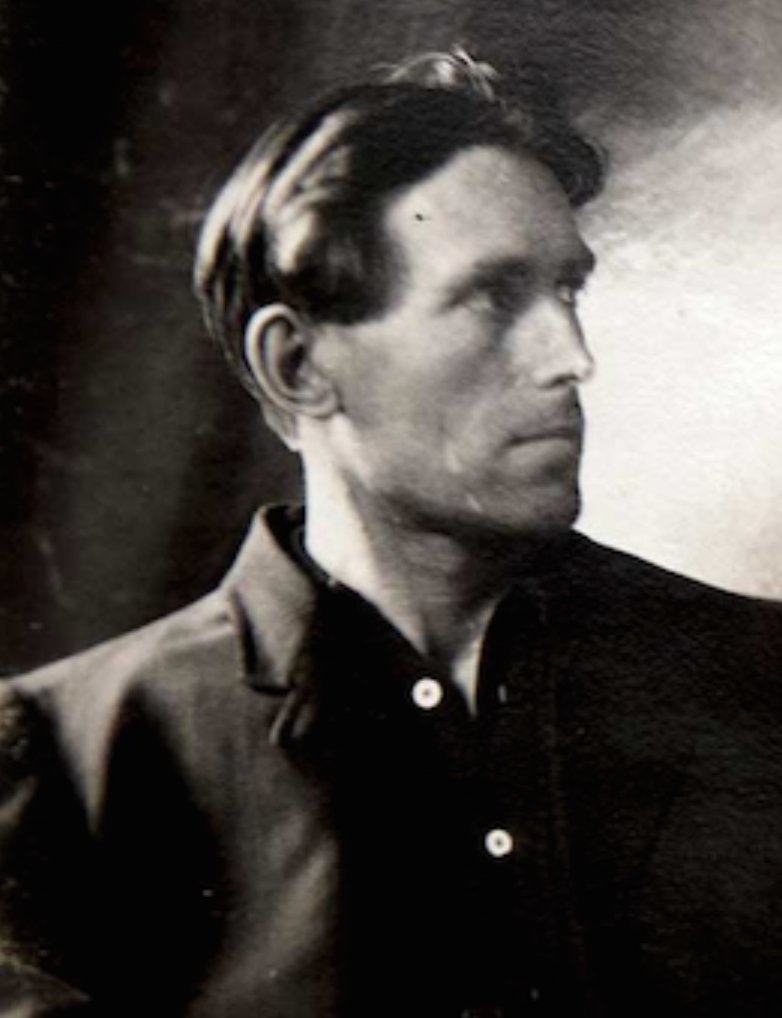
Thanks to a FB pal’s post I learned of Joe Hill today. Not heard of him before.
An itinerant worker of Swedish ancestry, Hill was a ‘Wobblie’, or member of the IWW (Industrial Workers of the World), rising to prominence in that organisation as a songwriter and cartoonist, as well as for his vocal activism.
Hill was executed, aged just 36, in 1915. Allegedly for a robbery in which two men, father and son (the elder an ex-policemen), were killed. I know next to nothing about all this. So I’ll be looking into it. It’s pretty fascinating!
Tom Morello of RATM credits a whole lineage of protest music to Joe Hill’s leading example, which is interesting. As a musician and artist I’m immediately drawn to Hill, not just because I share his politics to some extent (to what extent I don’t know as yet!), but because art and music are my ‘bag’.
Rather strikingly, Hill’s will, reproduced below (along with a post-mortem photo showing his corpse, complete with the execution bullet holes!), is in verse. A poet to the last!
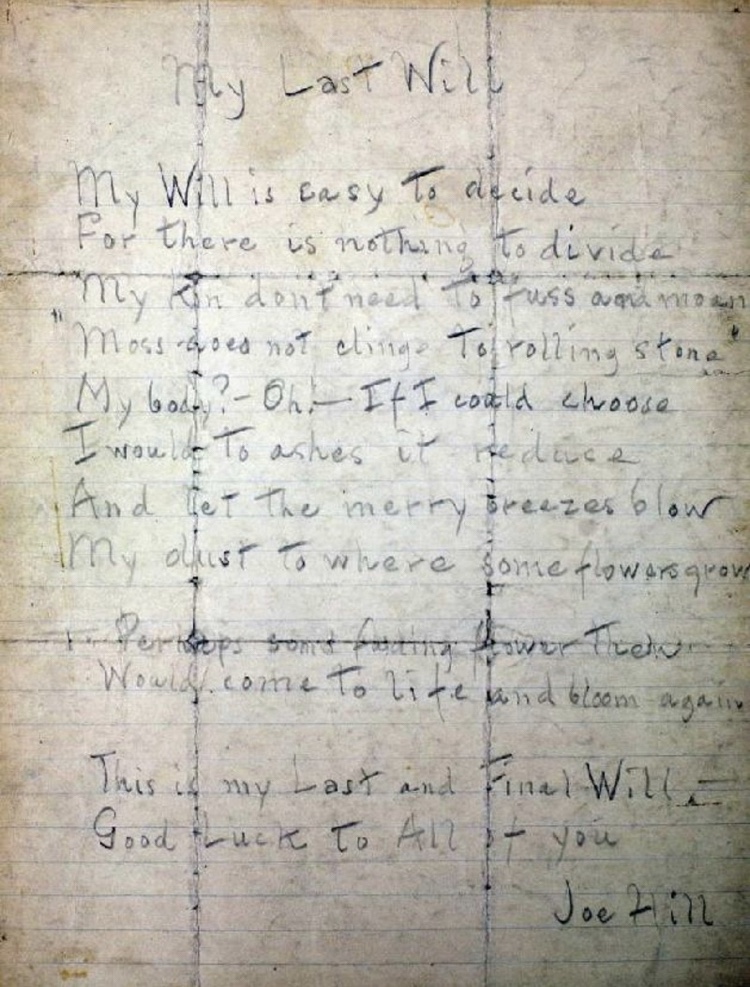
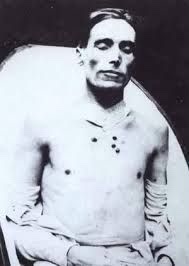
The popular perception on the left is that Hill is a martyr, a scapegoat, a ‘pesky agitator’ silenced by the boss class. Hill refused to exonerate himself entirely, claiming he was innocent. But unwilling to name a lady for love of whom he had, he said, been shot by a another man!
The gunshot wound, which he presented to a doctor on the same day as the fatal double shooting of which he was eventually accused, was, it seems, what got him the death penalty.
A tantalising tale! I must find out more.
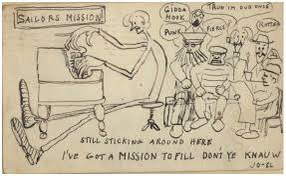
* Quite a striking/good looking dude! Could’ve been played by a young Willem Defoe, perhaps?
MUSiC: Ramon ‘Tiki’ Fulwood, drummer
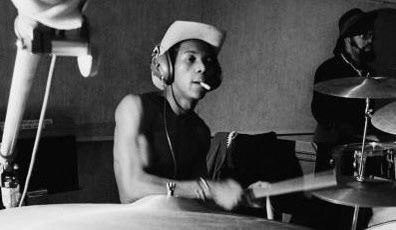
I absolutely adore some of the Funkadelic/Parliament music. And it’s often very largely due to tremendous rhythmatics, from the drums, obviously, and bass, guitar, keys, etc.
One of the engine room crew responsible for some of this musical wizardry was Tiki Fulwood. As the years go by, and my appreciation for musicians like Fulwood grows, I want to know more about them.
This post will, I hope, grow into a little biog/tribute to this superb musician. First of all, I’ll link to a few things I found on the web about him, such as this, from George Clinton’s website.
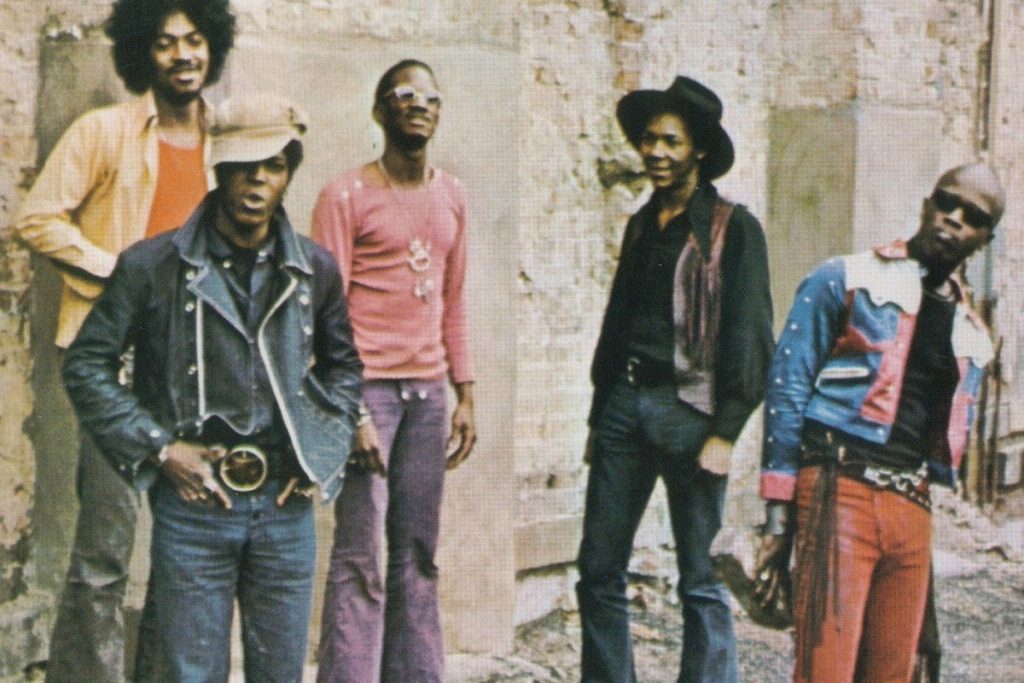
I was surprised to learn that Fulwood had played the drums not only on lots of fab Funkadelic stuff, but also on two stone cold soul pop classics, Tyrone Davis’ Can I Change My Mind and Turn Back The Hands of Time. Dude should be a legend for those alone!
Another more in depth piece can be found here, posted to the ‘rate your music’ website, by someone going by the tag soulmakossa. Whoever you are, thanks for this superb piece!
In my search for all things Tiki, I also found this, from another drummer (props to Ben Woollacott), giving his take on one of Fulwood’s opening fills, in this instance from the Funkadelic track Goold Old Music.
MUSiC: Casiopea, 1979
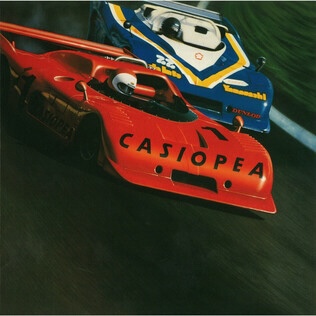

I can’t believe I haven’t already posted this album!? Or have I!?
The YouTube video above was my introduction to Casiopea. And it was love at first sight/sound. Sadly only two or three tracks from this splendid performance are to be found online.
Like Led Zeppelin’s fabulous debut of a decade earlier, it’s the group’s brilliant drummer who kicks things off on 1979’s eponymous debut.
Bassist and co-founder Tetsuo Sakurai is clearly indebted to Antony Jackson and Headhunters era Hancock for the main spinal groove of opening number Time Limit. Horns are courtesy of Yankee-doodle fusionistas Dave Sanborn and the Brecker Bros.
After the taught and energised slap around the chops that is Time Limit, things shift down a few gears for the silky smooth boudoir vibes of Tears Of The Star. Founder member and guitarist Issei Noro plays a beautiful acoustic guitar solo, after which bassist Tetsua Sakurai shows his tastefully restrained chops, deploying a wonderful classical guitar style (fingered tremolo?) on his bass. And then the song builds to a climactic keys segment, before returning to the opening mellow vibe, to shimmer out with a smattering of sexy sax. Fantastic!
Track three Space Road starts with a more upbeat version of the groove that Tears finished with, before launching into a very energised slightly Latin-esque groove, over which the chords progress in a manner that suggest a constant rising of pitch and energy. These guys really are incredibly tight and sympathetic. Midway through Noro goes into his solo, starting with a kind of crying seagull sound that reminds me of another Jap-Fusion guitar monster, (what’s his name? The Rainbow Goblins dude… is it Masayoshi Takanaka?). For the keys solo, Sasaki goes to his cowbell. More cowbell!!! The energy is off the charts, but it’s all so controlled, and clean. Really incredible.
I think on this debut disc all compositions are by guitarist, Issei Noro. They really capture or represent a certain very bright very positive era of fusion. And on that note, we get to Midnight Rendezvous. Definitely a Desert Island Discs choice pour moi! I’m going to have to teach myself the drum parts to this sublime recording.
The groove is a masterfully balanced combo’ of simplicity and subtly challengingly nuanced feel. One of those rare and beautiful moments where everything is in perfect balance. You wouldn’t want to add or take anything way. It’s perfect! Noro’s guitar solo exemplifies this: structured, and yet excitingly on the edge, as if perfectly poised between composed and improvised. No wonder they play it more or less note for note live. Why mess with perfection?
Sasaki gets a kind of outro solo, in which he really just grooves, rather than out and out soloing. And again, it’s perfect for the song. His chops are, frankly, staggering. Once again attaining that perfect sweet spot between composition and improvisation.
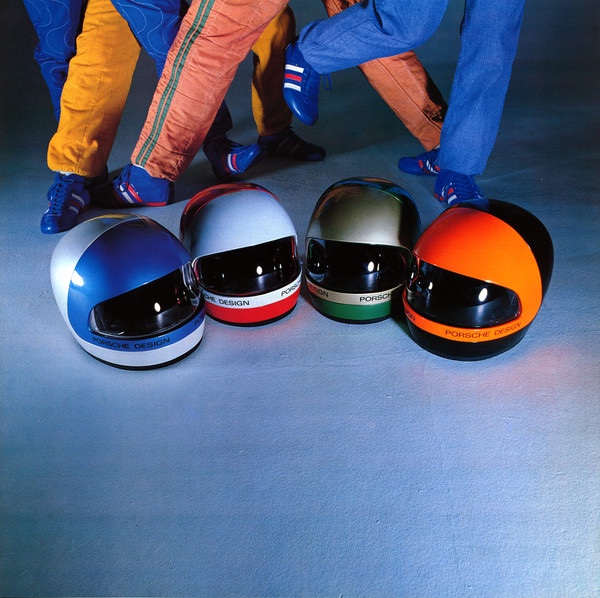
What was side two kicks off – or on CD continues – with the majestic Far Away. Strings are added to the mix here, as indeed they are on numerous tracks. The strings are credited to ‘Tomato Strings’! Whoever that was, they’re once again pitch perfect. Noro’s signature riff on Far Away is the perfect bedrock for the band to groove and solo on. And like the entire album, it’s suffused with a joyfulness characteristic of the fusion these guys make.
Swallow sees the tempo raised again, Sasaki’s drumming simultaneously ballistic and yet tightly focussed, restrained even. Astonishing! And like every instrument on these recordings, his kit – drums and cymbals – sounds utterly perfect. I’d love to know exactly what cymbals he plays. They have a sound I want to be able to emulate/recreate.
They reach a pitch of ballistic bombast in this track, just before Sasaki’s brief but powerful drum solo, that captures the intensity of their live performances. What an incredible band! Awesome is a much overused and abused term these days. But it’s just right for these dudes.
The penultimate track is the only number to feature vocals. And, like everything else here, they’re absolutely terrific! Kind of makes you wonder why they didn’t have more vocals in their music? But really they are an instrumental jazz fusion outfit. So their instruments do the singing, by and large. But it’s interesting to note that they could sing, and beautifully. Noro even goes a bit Benson, delivering a tasty scat’n’axe solo.
The album finishes, all too briefly, clocking in at under 40 minutes, on another atomic fusion bomb, Black Joke, the other track from the 1979 live performance viewable – see video above (warning: humongous bass solo alert!) – on YouTube. Phew!!! What a magical excursion to a land of musical waves, mountains and exquisite cherry blossoms!
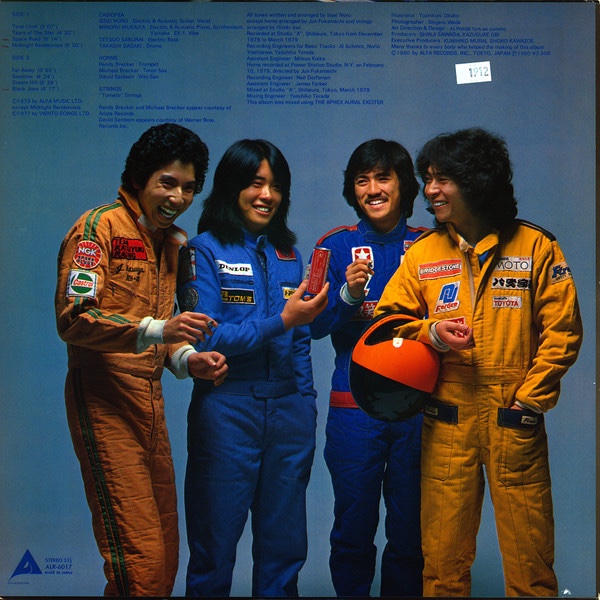
Although I’m primarily a drummer, and totally dig the brilliance of Takashi Sasaki’s jaw-dropping performances throughout this album, props have to to every single person playing on this utterly magnificent album. And Black Joke signs off just as they started, all cylinders firing in beautiful concert.
Minoru Mukaiya’s keys are note perfect, the selection of sounds, from mellifluous Rhodes to funky synths capturing a period vibe that to me is pure heaven. Tetsuo’s bass playing is muscular and lithe, light or heavy, and – like everything else here – pitched to sublime perfection. Band founder/leader and chief composer Issei Noro is on blinding form. Whether he’s shredding, or laying down the greasiest fonkiest riffs, he’s always bang on the money.
And Takashi Sasaki? Well, as I’ve already said numerous times above… words fail me. Drumming attains musical perfection sometimes. And this is a case in point. There are a few albums – LeRoy Hutson’s mid ‘70s stuff – or tracks (Herbie’s Actual Proof, Jackie Wilson’s Higher and Higher, Toto’s Georgy Porgy) – and this, which attain a peak of perfection I can only be dazzled by and forlornly dream of aspiring to.
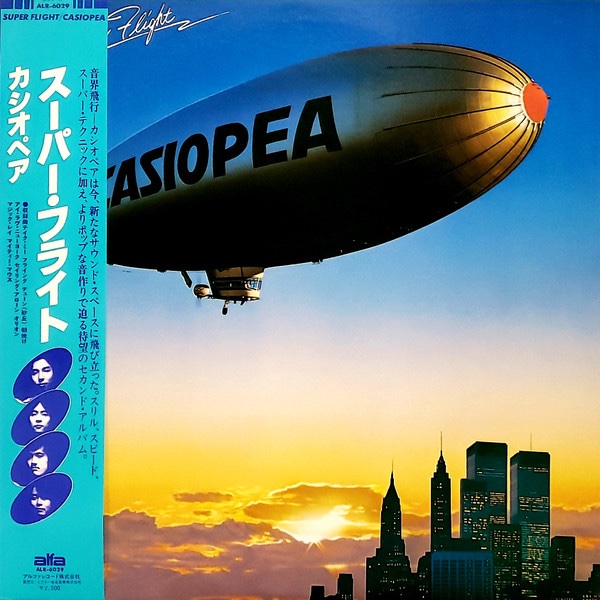
If you dig the first Casiopea album, as I do, you’ll want their second, Super Flight (pictured above) as well. It’s the last to feature the sublime drumming talents of Takashi Sasaki. Or would that actually be Mint Jams? The latter sees the arrival of the very talented Akira Jimbo. But it may also feature Sasaki on some tracks.
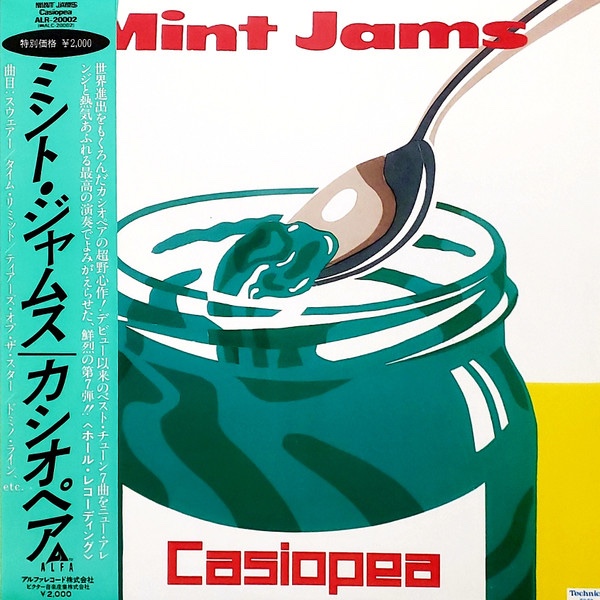
Footnotes
Fans of the line up that recorded Casiopea’s first two albums, with the astonishingly crisp, precise and lightly deft drumming of Takashi Sasaki, might enjoy this recording, by keys player Tatsuya Kohima, which features the Casiopea lads as session backing band.

MEDiA: Book Review – Das Reich, Max Hastings
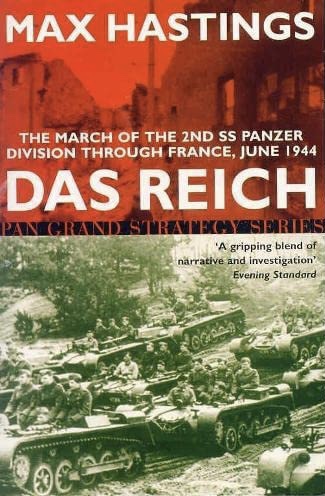

First published way back in 1981, the title of this book is, I feel, a trifle misleading, inasmuch as a good deal of it is as much about SOE, British/Allied special forces, and French Resistance, operating behind the lines, as it is about northward march of the infamous Das Reich!
One criticism I have, which has several interconnected strands, has to do with the class to which Max Hastings himself and a good number of the public school educated British ‘cast’ of his subject belong. The slightly dewy-eyed self-love of all such elites is both rather unctuous and not a little odious. When Hastings rhapsodises over numerous rugger loving toffs, playing at war, even when it’s very real and may well cost their own and others lives, it’s hard not to wince a bit.
A secondary point arising from all this is the possible overstatement of British/Allied efforts, and a concurrent downplaying of the French natives’ own efforts. But rather than going over all this here, I’d urge the interested reader to simply get hold of Das Reich, and decide for themselves. Hastings summarises the complexity of such things very well.
The titular or headline story traces how Das Reich, pulled out of their role on the Ostfront, start out resting and refitting deep in Southwestern France, at Montauban. Initially, and rather inappropriately, they are tasked with fighting insurgents – with dire consequences – before finally heading for Normandy, in the aftermath of D-Day, to fulfil their proper role.
As already alluded to above, Das Reich also relates how the aforementioned insurgents, with help from Allied agents, seeks to impede the 2nd SS Pz Div’s northward journey. Thanks in particular to allegedly anti-maquis actions Das Reich carried out at Tulle and Oradour Sur Glane (with which latter subject The World At War TV series so memorably commences), there’s a frisson of horror in the story. Although, as Hastings points out, such barbarity was routine in Russia, where Das Reich learned the Nazi ways of war. Nor, indeed, are the Allies blameless; Hastings asks, rhetorically, can the area-bombers of Dresden really claim moral superiority over the SS butchers?
I found Das Reich a fascinating and exciting, well-researched and well-written, and – despite Hastings slightly patrician establishment vibes – pretty well-balanced account, of a very interesting episode in the campaigns of Normandy and beyond. Definitely recommended reading.
MUSiC: 1969, Gabor Szabo, 1969
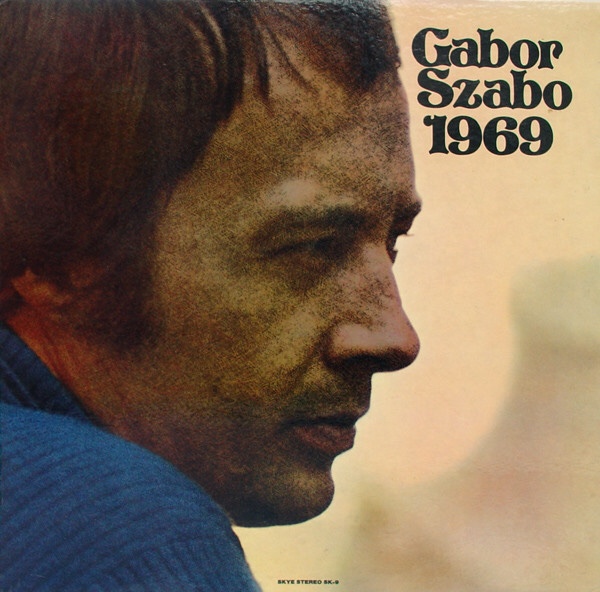

Phew!
Out of the blue, after a long of spell of excellent sleep, I’ve just had a pretty awful night of insomnia. And, ironically, I’ve finally gotten around to starting to read Robin Walker’s Why We Sleep. So I’m more than usually aware of how bad losing sleep is!
Anyway, after several hours of just lying in bed, fully awake, I figured I might as well do something, since I wasn’t apparently able to sleep. So I wrote a bit, for the blog, and I listened to 1969 (and some other stuff, inc. Mizrab), by Gabor Szabo. Holy guacamole, 1969 is really good!
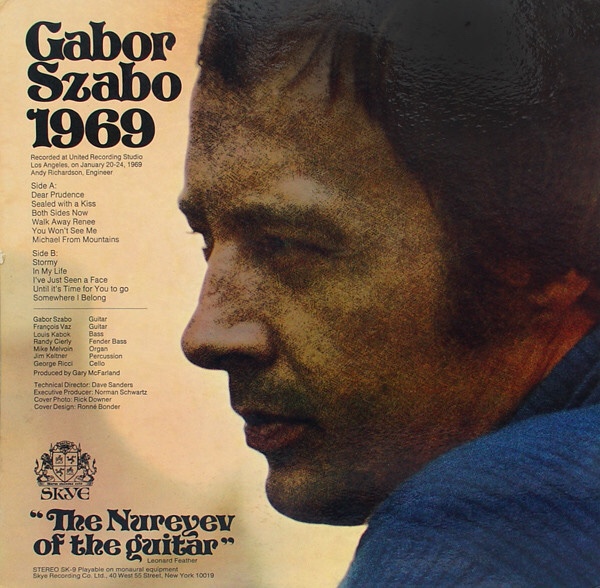
Before getting into it track by track, here’s the track list and personnel credits:
Dear Prudence
Sealed With A Kiss
Both Sides Now
Walk Away Renee
You Won’t See Me
Michael From Mountains
Stormy
In My life
I’ve Just Seen A Face
Until It’s Time For You To Go
Somewhere I Belong
Gabor Szabo - guitar
Francois Vaz - guitar
Mike Melvoin - keys
Louis Kabok - bass
Randy Cierly-Sterling - bass
Jim Keltner - drums/percussion
George Ricci- cello
Gary McFarland - arranger
It’s pretty stunning to think that stuff like this is how drummer Jim Keltner, who I first grew to know and love through his long term associations with Bob Dylan and Ry Cooder, got started! And everything about the whole musical package is so great I want to know more about all concerned. Didn’t keys man Mike Melvoin play with Tom Waits, on Nighthawks At The Diner?
Some of the other names – Francois Vaz, Louis Kabok – are new(-ish) to me. Gary McFarland I’d heard of. Along with promoter Norman Schwartz and Cal Tjader, Szabo and McFarland founded the short lived Skye Records, for which label this absolute gem was recorded.
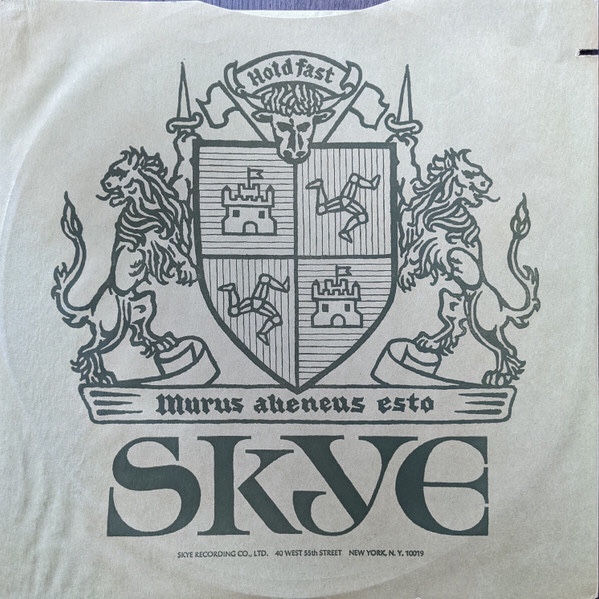
Having dipped into this album frequently recently, I’d still not listened the whole way through. That is until my recent bouts of insomnia. The night before last, during which I didn’t sleep at all – until I caught up a bit during the day* – I listened to the entirety of 1969 in one sitting (or, to be more accurate, one laying!).
* As a teacher on school holidays I’m lucky I can do this!
The version I listened to, a full-album rip on YouTube, doesn’t have the best audio quality. I’m hoping when I get this on CD it’ll be better! This YouTube version is rather muddy, sonically. And most Gabor Szabo stuff is immaculately recorded. But that aside, the quality of the performances is superlative.
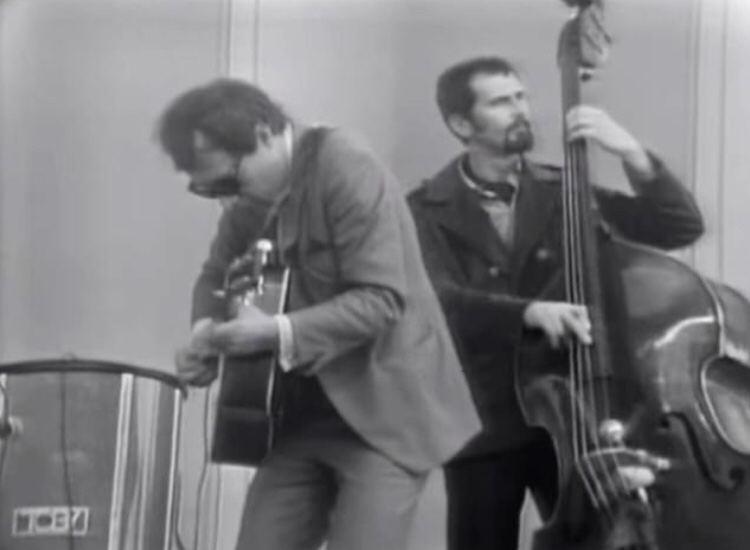
The group is an interesting one, as all the players have jazz chops, but are also very comfortable with and attuned to pop/rock sensibilities, such that they can play with a stripped down minimalism most out and out jazzbos very rarely manage. Although Gary McFarland isn’t a player here, it strikes me that perhaps his arranging and producing skills are instrumental in achieving the sounds and the, er… vibes?
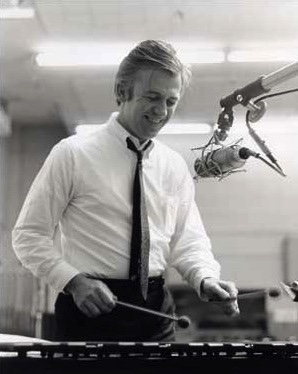
I’m going to come right out and say it; I do believe this one of Szabo’s greatest records. Oft times it’s belittled (albeit not as much as his late ‘70s stuff; Doug Payne calls much of Faces ‘disco trash’!), particularly by those who prefer his more overtly trad’ jazziness. (I don’t mean Dixie!).
Part of the charm of this particular album is the material. There are four Beatles numbers, two of which – You Won’t See Me and In My Life – are from Rubber Soul (possibly my favourite Fab Four album?). And, as well as several more obscure choices, there’s the oft-covered Stormy.
But what’s this? Two Joni tunes!? Both Sides Now has been covered umpteen times. And Szabo’s version is brilliant. But Michael From Mountains? This latter ranks with Mark Murphy’s Barangrill, and Don Sebesky’s Song To A Seagull. Simply having the good taste to pick such wonderful material, never mind the required skill to make such a unique artists’ unusual music one’s own… fab!
Ultimately 1969 hits that eargasmic G-spot for me: musical perfection. Everything is just so. You could try to label it: it’s partly jazz, partly pop, partly rock, bossa, easy-listening, psych, etc. The joy and the magic lies precisely in rendering such categorisation efforts totally footile*. It’s just great music.
* The Fenland yod-dropping way!
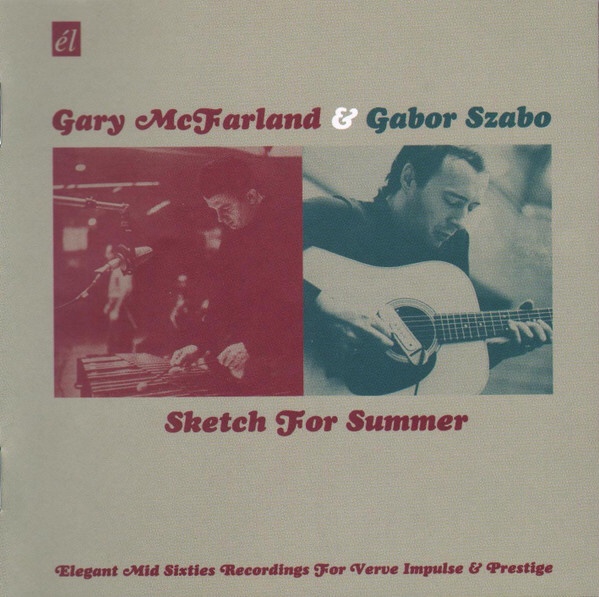
Whilst writing this post I discovered that Cherry Red did a reissue/compilation called Sketch For Summer, which focussed on McFarland and Szabo’s richly creative partnership. Like almost all the music I’m getting interested in lately, this is OOP and hard/expensive to find! It only covers their 1964-‘68 collaborations, so nothing off 1969 is included. Interesting to see two tracks are with Brazilian maestro Tom Jobim!
But to round off, back to ‘69! The album starts with Dear Prudence, and ends with the only Sabor original in this particular set, Somewhere I Belong. I’m giving this disc my rare accolade of six stars. That’s a bit like Spinal Tap’s amps going up to eleven: the normal range is 0-5 stars. Only the crème de la crème attain the hallowed six!
MUSiC: Mizrab, Gabor Szabo, 1972
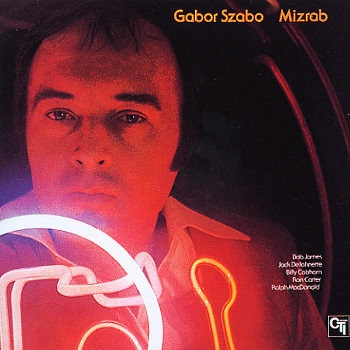

This arrived on Sunday. It’s a Japanese reissue, from a series of CTI re-releases; sadly the liner notes are Greek to me, so to speak.
Recorded at Rudy Van Gelder’s famous studio, in ‘72, it was the first of just three for Creed Taylor’s equally famous CTI label (the others being Rambler and Macho).
With a rhythm section of Bob James, Ron Carter, Ralph MacDonald, Billy Cobham and Jack DeJohnette, and horns that feature Hubert Laws and others, Szabo is supported by a stellar cast. The arrangements are by Bob James, and it’s all engineered by RVG.
What was side one was made up of the first two lengthy cuts, Mizrab and Thirteen, both Szabo originals. Side two develops the guitarist’s famously eclectic range in terms of other folk’s material, with It’s Going To Take Some Time, by Carole King, and Seals’ and Crofts’ Summer Breeze, sat either side of a Szabo take on a Shostakovich Concerto!
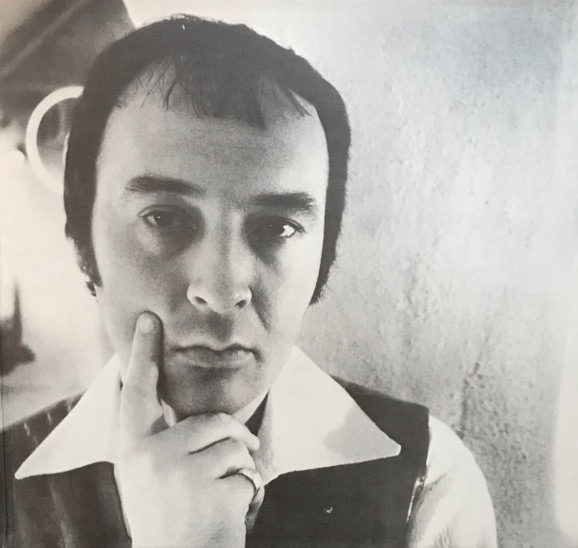
The album kicks off with Szabo original and titular Mizrab, Ron Carter’s opening bass figures conjuring an Arab-influenced exoticism suggested by the track’s name. Once it gets going, there are shades of modalism, and things even sound Metheny-esque occasionally.
The title track clocks in at just under ten minutes, and after Szabo’s own long solo, the rhythm section of Bob, Ron, Billy and Ralph really cook the groove in a deliciously early ‘70s jazz fusion vein, so very CTI!
It’s interesting hearing Cobham playing in a more restrained than usual manner! Which he does admirably, whilst still retaining his instantly recognisable touch and sound. Towards the end he ramps it up a bit, when taking a solo. Does he also slip out of sync? I’m friends with Ron Carter on FB. I might have to ask him about this!
The same group then tackle a second Szabo number, called Thirteen. This begins with Szabo’s and Ron duetting, showing what total masters of their instruments they are, in a fabulous interplay, before Cobham and co join (sans Ralph, poss’?), for an epic jam.
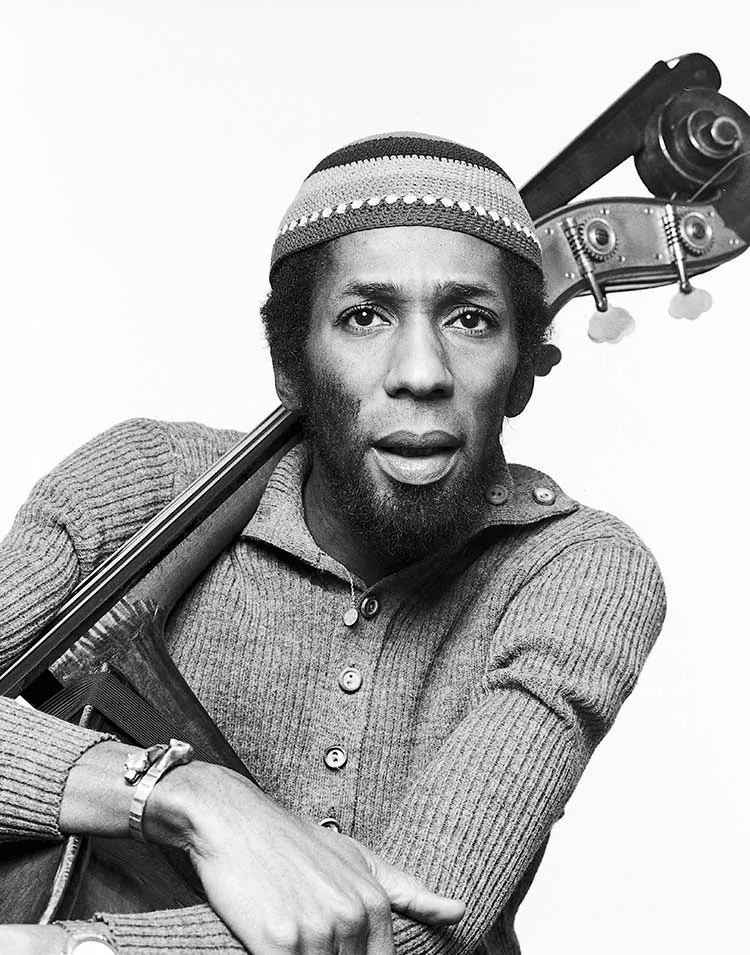
The main two chord vamp is just a semi-tone shift, again evoking eastern vibes. And, having introduced that term, I have to pause and remark on what an incredible vibes player Szabo is. Not vibraphone, obviously! But feel. And it’s clear that his vibesmanship is subtly but strongly steering the whole ensemble.
Also clocking in at near ten minutes (just over nine this time), the groove and feel are quite radically different ‘cause Bob James is playing acoustic piano, as opposed to the Fender Rhodes type electric of Mizrab.
Also worthy of note is that there’s quite clearly, on both Mizrab and Thirteen, a second guitar. But it’s Szabo overdubbing, rather than another player. Yet another sign of Gabor’s unusual and idiosyncratic take on contemporary jazz. Really quite something!
After the long epic intensity of the two tracks of ‘side one’ cone the three shorter tracks that formerly comprised ‘side two’. These are where the strings and horns come in, with that rich, lush and full CTI production feel.
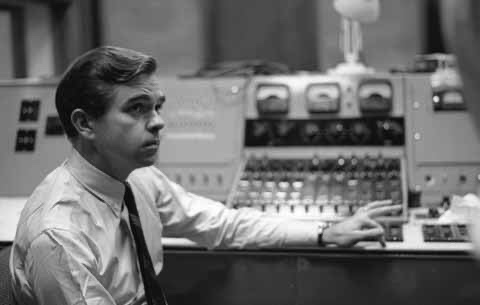
Carole King’s It’s Going To Take Some Time feels aptly light, and pop-folk, after the jazzy intensity of ‘side one’. But despite the expansion from quartet or quintet to a full on studio number with strings and horns, it’s still very Szabo, and sits happily with the foregoing material.
Things get a bit more ambitious with Concerto #2, which starts out like a small to medium chamber orchestra, and is more Shostakovich/classical – naturally – than what has preceded it. When it transitions from orchestra to jazz ensemble a pronounced 6/8 feel emerges, and the much lighter touch of Jack DeJohnette on drums adds to the change of feel.
I’m not always convinced by jazz meets classical experiments (Garbarek with The Tallis Scholars was awful!). But I quite like what Szabo et al cook up here. Interestingly it starts out classical, goes all jazz, and then the two start to blend and merge. This is an approach Don Sebesky explores on another excellent CTI recording, Giant Box, albeit with a rather overall effect.
And so we come to the fifth and final track, the Seals and Croft classic, Summer Breeze, which I first grew to know and love via The Isley Bros version. Cobham is back in his throne, and this track returns the entire recording to a kind of sonic and spiritual home/centre, that perfectly balances all the disparate yet homogenised elements that all the players and the material have brought to the party.
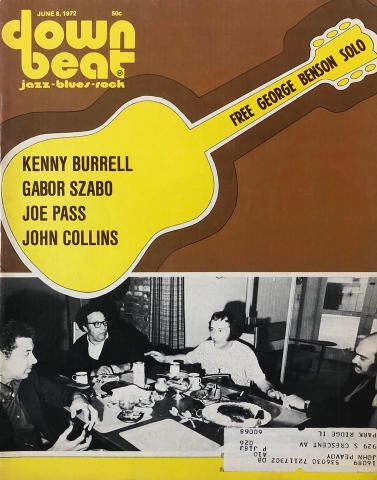
There’s plenty of strings and horns, beautifully arranged by James, a middle soloing section over a cleverly constructed riff (Carter and Cobham expertly driving the groove, with a little ‘back to front’ but if rhythmic play thrown in) from the song, all bookended with the melodic themes of the original composition, beautifully played by a truly stellar cast of musicians, fabulously recorded by Rudy, delivering another gem for Creed. Result!
